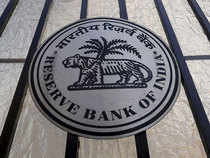Kolkata: Reserve Bank of India has proposed a rule-based approach in fixing new Ways and Means limits for the state governments, replacing the previous expenditure-based system.
It will set up a panel to recommend parameters of the new system which is aimed at preventing automatic monetisation of deficits.
The central bank which acts as debt manager for state governments provides short-term loan to them to bridge temporary liquidity mismatches. The temporary loan facility is called Ways and Means Advances.
The proposal was mooted at RBI Governor Shaktikanta Das’ meeting with the finance secretaries of 25 states and Puducherry. The states have also agreed to link their receipts and payment systems with RBI’s integrated accounting system (e-Kuber) for greater system efficiency.
It was the first time that Governor Das held discussions with key functionaries of state governments after assuming office.
Amid states' stressed financial health and overall deteriorating key deficit indicators, issues like gross market borrowings, the need for greater information dissemination, measures for widening the investor base and deepening the secondary market in State Development Loans and the issue of cost of borrowing have also been discussed.
Officials from the ministry of finance, Controller General of Accounts, Comptroller and Auditor General of India and Governor were present.
Market borrowing by state governments is likely to rise amid deviation from their fiscal consolidation with increasing stress on state finances following indiscriminate loan waivers.
RBI has several times warned state governments that debt waivers could deflect the state from its fiscal consolidation path, while state’s fiscal deficit-to-state gross domestic product ratio continued to be above the FRBM threshold due to shortfall in revenue receipts and higher revenue expenditure from implementation of farm loan waivers and the pay commission recommendations on salaries and pensions.
With the higher borrowing requirements, there could be a concomitant impact on borrowing costs, the central bank had warned last year. RBI’s study on state finances showed that the past nation-wide debt-relief in 2008 helped in reducing household debt but investment and productivity continued to suffer.
As per the revised estimates, states have budgeted for a revenue surplus in 2018-19 and a lower fiscal deficit. However, fiscal risk emanates for many states with roll outs of farm loan waivers as well as the implementation of the pay commission awards.
Published On : 18-03-2019
Source : Eonomic Times

